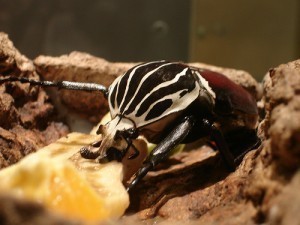Salamander Sizes
It’s easy to take for granted that the salamander is a kind of lizard, but the truth is it’s not that simple. The salamander is an amphibian while the lizard is a reptile, and any resemblances are mostly superficial. Interestingly, there are certain types of salamanders that are also mistaken for eels or snakes. All this confusion is owed to the various salamander species’ assortment of unique physical peculiarities.
The typical body structure of the adult salamander usually resembles that of the lizard; that is, slender-bodied with four limbs and a long tail, the difference being their short noses. They mainly have four toes on their fore-limbs, five toes on their hind-limbs and generally have no claws. There are however some species whose limbs are either significantly reduced in size or absent altogether, giving them an appearance akin to an eel or snake (there are certain lizard species that are like this as well). Salamanders mostly have bright-colored skin, although underground-dwelling species lack skin pigment and are usually pink or white in color. Their skin secretes mucus that acts as a lubricant while they are swimming, sustains salt balance when in the water, and helps retain their moisture when they are on dry land. As a salamander matures, it regularly sheds off its skin’s outer layer or epidermis, which it would eat afterwards.
 While most salamanders are moderately small in size, there are however certain varieties that differ in dimension. The Minute Salamander or Thorius, a genus in the Plethodontidae family, has a size range of 2 centimeters (0.8 inches) up to 2.7 centimeters (1.1 inches). Considered the largest salamander in the world, the Andrias davidianus or the Chinese Giant Salamander can reach a maximum length of 180 centimeters (6 feet) and a maximum weight of 65 kilograms (140 pounds), although it achieves this size only rarely. The majority of this species range in length from 10 centimeters (3.9 inches) to 20 centimeters (7.9 inches). The average weight of the mature Chinese Giant Salamander is 25 to 30 kilograms (55 to 66 pounds) and its average length is 1.15 meters (3.8 feet).
While most salamanders are moderately small in size, there are however certain varieties that differ in dimension. The Minute Salamander or Thorius, a genus in the Plethodontidae family, has a size range of 2 centimeters (0.8 inches) up to 2.7 centimeters (1.1 inches). Considered the largest salamander in the world, the Andrias davidianus or the Chinese Giant Salamander can reach a maximum length of 180 centimeters (6 feet) and a maximum weight of 65 kilograms (140 pounds), although it achieves this size only rarely. The majority of this species range in length from 10 centimeters (3.9 inches) to 20 centimeters (7.9 inches). The average weight of the mature Chinese Giant Salamander is 25 to 30 kilograms (55 to 66 pounds) and its average length is 1.15 meters (3.8 feet).
As earlier stated, there are a number of salamander species notable for having very small, almost invisible limbs. Examples of these seemingly-limbless salamanders include aquatic species such as the Amphiuma (also erroneously known as “conger eels” or “conger snakes”), which can grow to a length of 116 centimeters (46 inches) and whose legs are around 2 centimeters short (0.79 inches), and the Sirenidae, whose length ranges from 25 to 95 centimeters (9.8 to 37 inches).
Considering the different colors, shapes and sizes that a salamander has assumed, it could just as easily be compared to a chameleon as well. But despite the many ways nature has made to disguise it, it has not escaped being included in the endangered list. Climate change and deforestation have been cited as significant factors for its declining population. As the world becomes more aware of the importance of caring for the environment, the continued existence of these beautiful creatures shall hopefully be preserved.





